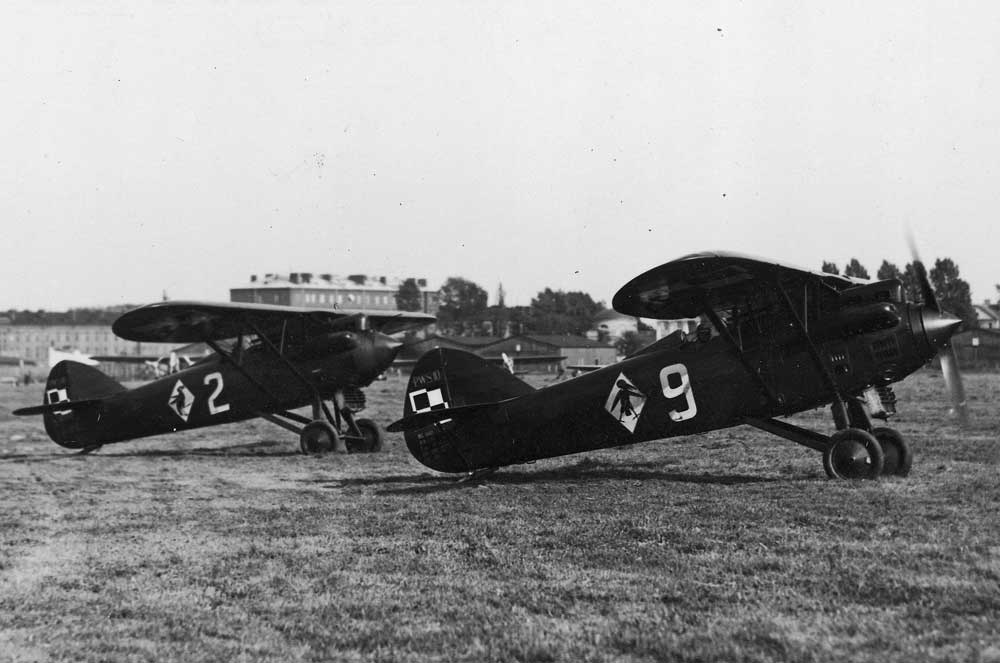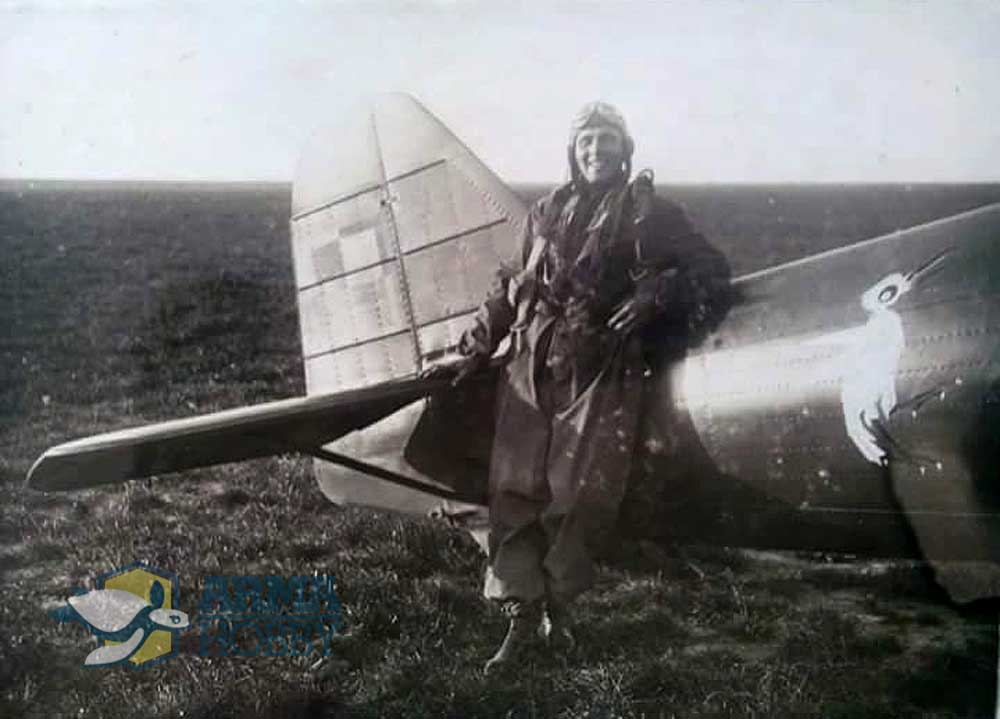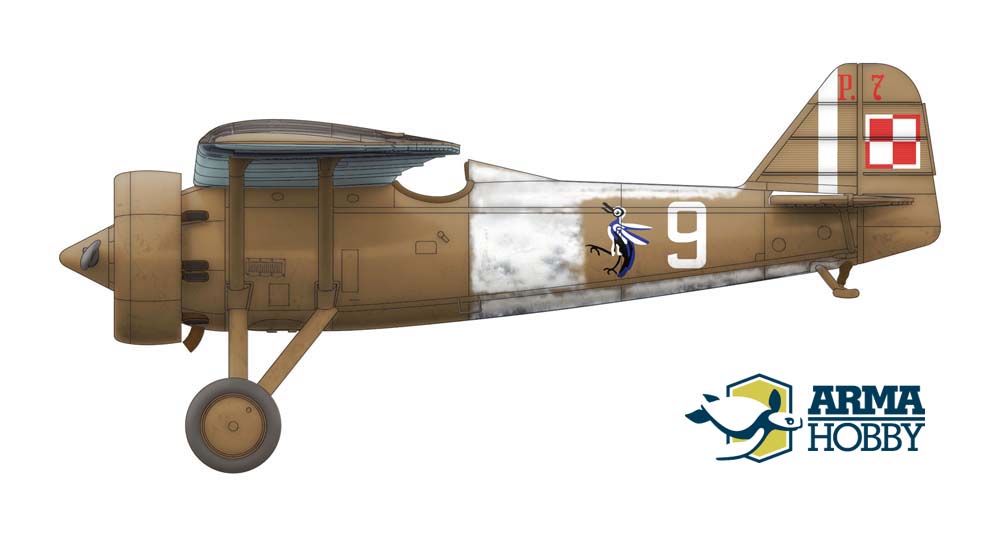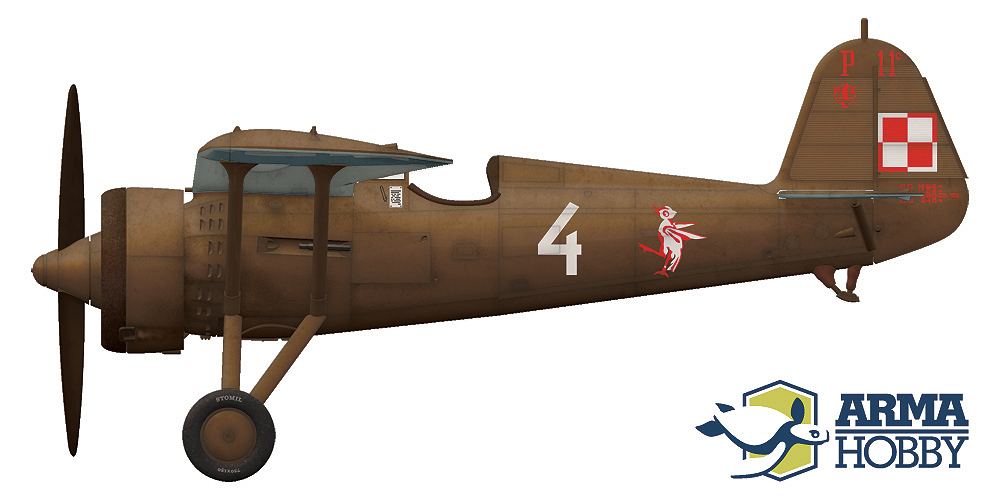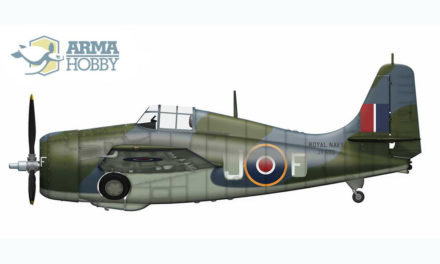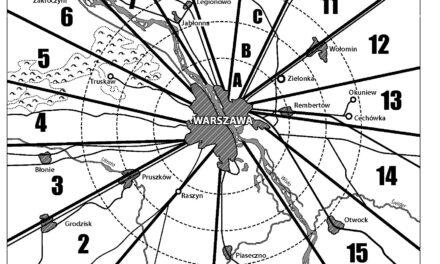Few Polish fighter squadrons had as distinguished and long traditions as 131. Eskadra Myśliwska (131. Fighter Squadron) of III/3 Fighter Wing “The Ravens” from Poznań. The squadron was direct successor of the 2. Wielkopolska Eskadra Lotnicza (2nd Aviation Squadron of Wielkopolska Region), created in the former Imperial Prussian Poznań-Ławica airbase 14th February 1919, initially as an “multirole squadron” with Halberstadt Cl.II two-seaters and one Albatros D.III fighter. In 1920 Spring the squadron was re-equipped with factory-fresh Austro-Hungarian Albatros D.III (Oeffag) fighters and was renamed as 13th Fighter Squadron. The unit participated in two most important, victorious battles of the Polish-Bolshevik 1920 war – defence of Warsaw in August and final rout of the Soviet armies in September Battle of the Niemen.
PZL P.11c of 131. Fighter Squadron, 1938. In September 1939 this plane was flown by Lt. Włodzimierz Gedymin, credited with 3 aerial victories in defence of Poland.
After the end of the Polish-Bolshevik war the squadron returned to Poznań, where, together with 15th Fighter Squadron, was incorporated into newly-created 3rd Air Regiment. In the following years the squadron was two times re-numbered (initially as 111. Squadron, and finally as 131. Squadron), but continuously served as the same unit. Its initial marking was a red lightning in the white disc, and, after introduction of the unified, geometrical squadron markings in 1928, white bar in a green box.
When, in the beginning of ‘30s, the command allowed for individualized and more complex insignia, the Poznań Fighter Wing, equipped at that time with PWS 10 fighters, chose the symbol of raven as a marking of their both squadrons. It is connected with a squadron legend, which we know from the Wacław Król’s account:
It is said, that when the 131. Squadron has been created in the Ławica airbase, its commander had an extraordinary adventure during the first training flight. After uneventful take-off the pilot flew around the city of Poznań and then flew to the nearby Kiekrz lake. There, over the forest, his airplane has been attacked by a huge, black raven. The pilot attempted to turn, but was not able to evade the collision with the bird, which stuck between wing struts and wiring. The raven, of course, has been killed, staining the wing with blood, but its legs have stuck between the aileron and the wing which partially blocked the airplane controls. […] Using only the rudder, the pilot, sweated and shocked, managed to reach the airfield. […] The raven was impressive and dangerous-looking specimen of its kind. It has frightened the pilot, but made no harm to the Squadron, so it was decided, that the raven would become symbol of the Poznań Fighter Squadrons.
PWS 10 fighters from Poznań Squadrons with early raven marking variants. Public Domain, Narodowe Archiwum Cyfrowe collection https://audiovis.nac.gov.pl/i/PIC/PIC_1-M-1292-11.jpg
While the story includes some mistakes (the Squadron was formed many years before the introduction of the raven marking, the raven was marking of all three Poznań fighter squadrons…), it very well summarizes the spirit of unit’s tradition, which survived the defeat in 1939 – the fighters from Poznań continued their gallant fight in the Battle of Britain – as 302 “Poznań” squadron with the raven as their marking! The mistakes in Wacław Król’s account may be justified with the fact that he knew the story from the second hand, as he was initially pilot of the Kraków 2nd Air Regiment and joined “The Poznań Ravens” already in Britain in September 1940. Soon his connections with Poznań pilots became stronger, and in 1943 Autumn he became the commander of the 302 “Raven” squadron.
PZL P.7a from Poznań with white raven – 133. Fighter Squadron marking. Photo from Janusz Adamczewski collection
The “Raven from Poznań” had many variants and for a long time no “official”, unified version existed. It was used by all three Poznań fighter squadrons: 131., 132., and existing for only a short time 133. Fighter Squadron, later transferred to Lwów as 161. Fighter Squadron. Even final versions of the marking had differed not only in colours (131. – white with red feathers, 132. feathers blue and black, 133. all white), but also in the general design and details.
131. Fighter Squadron marking on the airplane of the Squadron or the Wing Command flight (the “12” number is apparently too high for 10-airplane strong Squadron)
Reconstruction of the exact shape of the raven marking used on the 1939 airplanes we performed using few available photographs showing PZL P.11c from 131. Squadron. Its result is a bit different than previously known proposals published in some books or decal sets, but we are convinced that our decal is as close to the original marking of the 131. Squadron as it is possible. In order to make the identification of Squadron easier, 131. Squadron painted the side number in front of the raven, and the 132. Squadron – behind it.
Close-ups of the photographs we used in reconstruction of the 131. Squadron marking. “1a” it is the most clear and sharp of the available photos. It comes from “white 12” airplane. “2” is from the out-of-focus photo of the “white 6” from the 131. Squadron from 1938. To make comparison easier we mirrored (both “1a” and “1b”) and made lighter (“1b”) the ravens, which confirms that this is most probably the same marking as on the photo “2”. Final version of the 132. Squadron marking is clearly different in shape and colours.
PZL P.11c of 132. Squadron. Note the number position behind the raven and more dark details (blue and black), clearly different than in the 131. Squadron marking
All the photographs of the PZL P.11c airplanes from Dr. Tomasz Kopański collection
Poznań’s Ravens in model
Markings of aeroplanes from Poznań Fighter Wing 3/III are available in model kits:
PZL P.7a, 132. Fighter Squadron from Poznań. Markings for the mid 1930’s military manouvers applied with white removable paint. Markings from model kit PZL P.7a Deluxe Set.
PZL P.11c, 131. Fighter Squadron from Poznań, in 1939 in „Poznań” Army. After encirclement by the Germans on 17th September 2nd Lt. Henryk Bibrowicz (2 victories) and 2nd Lt. Lech Grzybowski (2 victories) flew this airplane to Małaszewicze airbase and left there. After the war outbreak squadron marking on the fuselage and national markings on the wing upper surface overpainted. Markings from PZL P.11c Expert Set 1/72. Read Squadron’s story in 1939 Campaign here.
Selected bibliography:
- Polish Fighter Colours 1939-1947. [in English]. Stratus, Sandomierz 2016
Modeller, son and father of a modeller. Loves digging through references and analysing old photographs. He builds aircraft, ship and vehicle models, the older the better. He has a weakness for Polish equipment, but does not despise the RAF, FAA and Great War topics. A journalist by training.
This post is also available in:
 polski
polski




